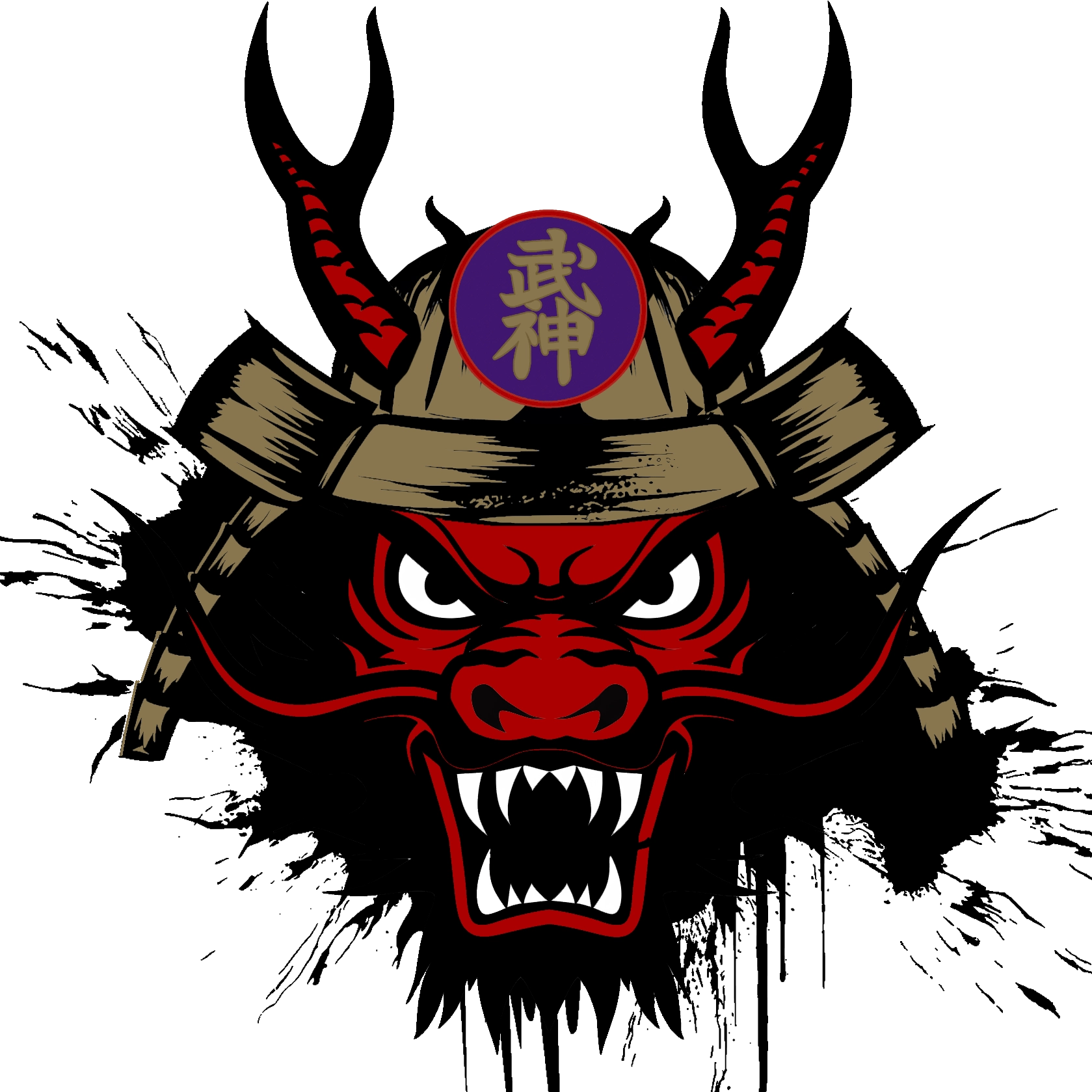This is the 9 Ryu-ha that is taught in the Bujinkan system. Masaaki Hatsumi was the Sōke (grandmaster) of all nine Japanese traditions. He has now appointed eight Japanese Dai Shihans as the new Soke of all nine schools.
九古流派 The 9 ryūha
神伝不動流打拳体術
Shindenfudō-ryū dakentaijutsu
(immovable heart school)
Founded in the Yeikyu-era (1113 a.d.) by 出雲冠者義照 Izumo Kanja Yoshiteru. The school is characterised as a style that emphasises natural movements, and the study of nature is important.
– 長登 敏郎 Nagato Toshiro Sōke is the 27’th generation grandmaster
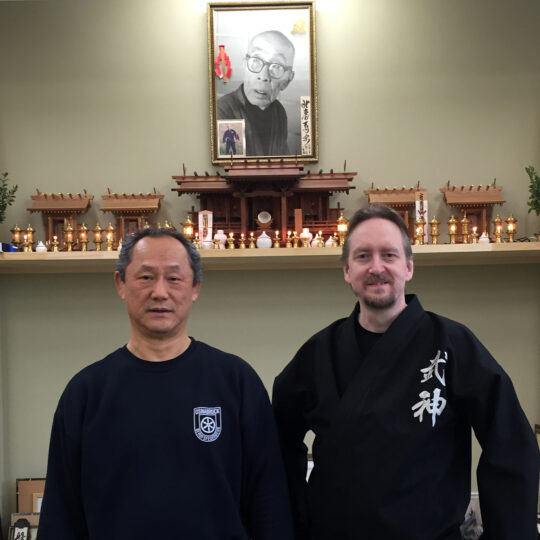
九鬼神流八法秘剣術
Kukishin-ryū happōbikenjutsu
(nine demon gods school)
Founded at the end of the Kamakura-era (1336) by 出雲冠者義照 Izumo Kanja Yoshiteru. The school is most famous in Bujinkan for it’s many weapons techniques such as sword, spear, halberd and staffs of various lengths.
– 岩田 義雄 Iwata Yoshio Sōke is the 29’th generation grandmaster

高木揚心流柔体術
Takagiyōshin-ryū jūtaijutsu
(heart of the willow tree school)
Foundend in the Yeiroku-era (1625-1711) by 高木折右衛門重俊 Takagi Oriemon Shigenobu. The school is a self defence style both Jūjutsu unarmed close combat techniques, and mūtō-dori unarmed against sword attacks.
– 逆井 則男 Sakasai Norio Sōke is the 18’th generation grandmaster

玉虎流骨指術
Gyokko-ryū kosshijutsu
(jewel tiger school)
Founded in the Hogen-era (1156-1159) by 戸沢白雲斎 Tozawa Hakūnsai. This school is perhaps the school that have the biggest influence of the unarmed basics in Bujinkan, such as Sanshin no kata, and Kihon-happō. Striking with the fingers and toes is very characteristic of this style of fighting.
– 石塚 哲二 Ishizuka Tetsuji Sōke is the 29’th generation grandmaster

虎倒流骨法術
Kotō-ryū koppōjutsu
(knocking down the tiger school)
Founded in the Tenbun-era (1532) by 坂上太郎国重 Sakagami Taro Kunishige. This school’s speciality is the art of manipulating the bone structure. The foot work is also quite unique by cross stepping, quite similar to the chinese styles. Also the use of the sword in this school is quite unorthodox.
– 野口 幸夫 Noguchi Yukio Sōke is the 19’th generation grandmaster
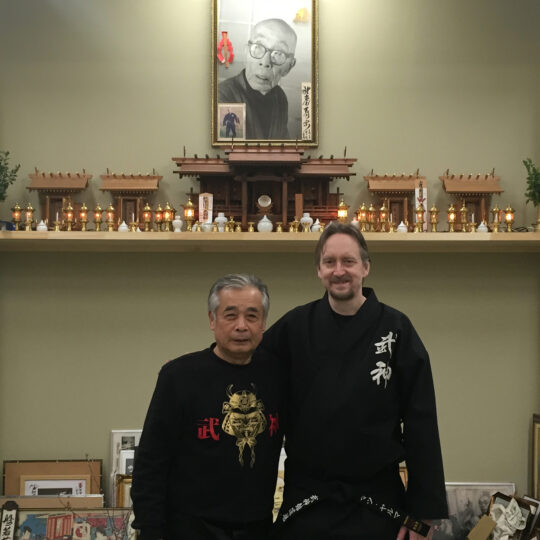
義鑑流骨法術
Gikan-ryū koppōjutsu
(truth, loyalty and justice school)
Founded in the Yeiroku-era (1558-1570) by 瓜生判官義鑑房 Uryu Hangan Gikanbo. This school have not been taught that much yet.
– 逆井 則男 Sakasai Norio Sōke is the 16’th generation grandmaster

戸隠流忍法
Togakure-ryū ninpō
(the hidden door school)
Founded in the ōho-era by 戸隠大助 Togakure Daisuke. This school is known in the Bujinkan as the school where all the Ninjutsu techniques come from. In the 80’s everything that was taught in Bujinkan was called Togakure-ryu, but the truth is that most of the things that was taught was from the schools above. You could say that the name was used to attract many students.
– 筒井巧 Takumi Tsutsui Sōke is the 35’th generation grandmaster and was born July 3, 1964.
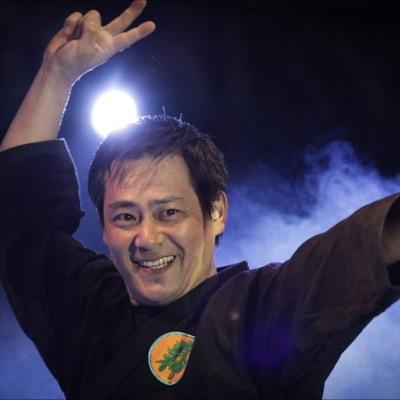
雲隠流忍法
Kumogakure-ryū ninpō
(hidden cloud school)
Founded in the Tenmon-era (1532-1554) by 伊賀平内左衛門家長 Iga Heinaizaemon Ienaga. This school have not been taught that much yet.
– 古田 恒二 Furuta Kōji Sōke is the 16’th generation grandmaster

玉心流忍法
Gyokushin-ryū ninpō
(jewelled heart school)
Founded in the Tenbun-era (1532) by 佐々木 Sasaki Goeman Teruyoshi. This school have not been taught that much yet.
– 菅 純一 Kan Jun’ichi Sōke is the 22’nd generation grandmaster

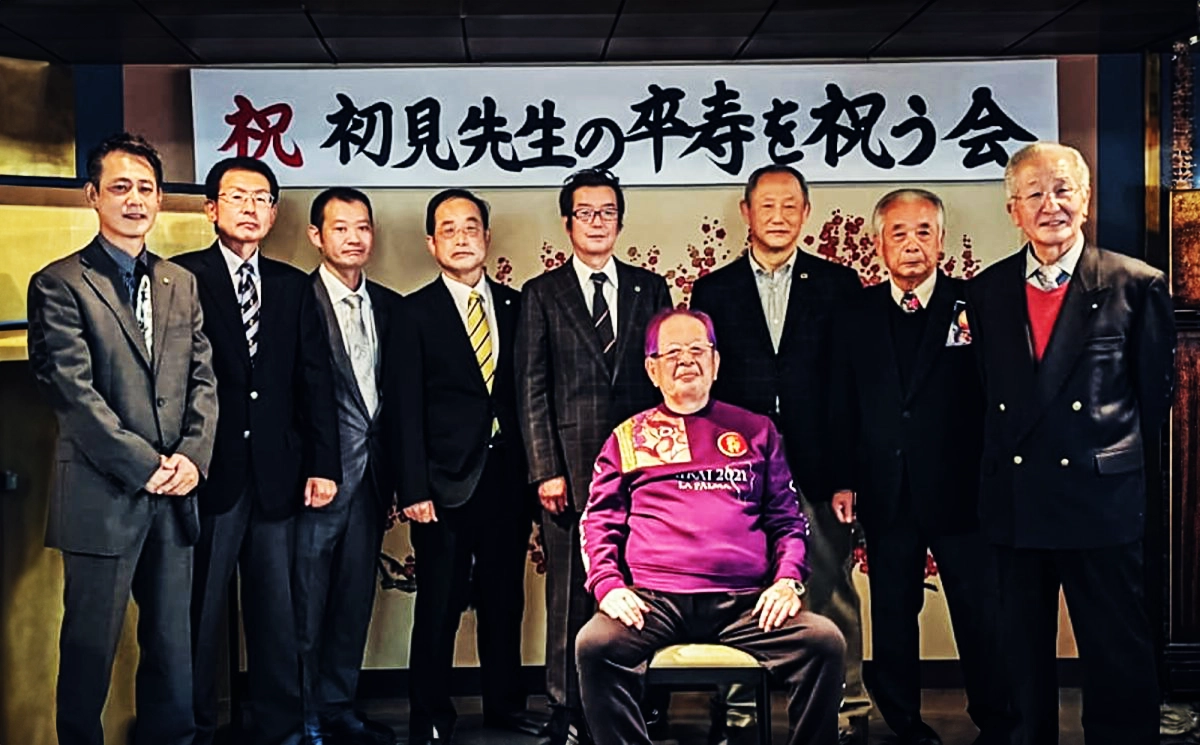
The 9 Bujinkan Ryu-ha and its importance
The essence lies not in the techniques themselves, but in the profound teachings they convey. When Hatsumi Sōke, the revered master, imparted his wisdom during the 80s up until his retirement in 2020, he emphasized that understanding the deeper meaning behind the techniques held greater significance. It was never solely about memorizing the specific techniques within the nine Bujinkan Ryu-ha.
In the Bujinkan Dojo, we approach the training of techniques from the various Ryu-ha as a cohesive system—Bujinkan Dojo Budo Taijutsu. The emphasis is placed on the underlying principles and concepts that unify the techniques, transcending the individual schools. By integrating the techniques seamlessly into our practice, we gain a comprehensive understanding of the art as a whole.
Hatsumi Sōke’s teachings encourage us to see beyond the surface level of techniques and explore the underlying principles, strategies, and mindset that make them effective. It is through this holistic approach that we truly embody the essence of Bujinkan Dojo Budo Taijutsu, enabling us to adapt and apply the teachings in any situation.
In essence, while techniques serve as vehicles for learning, it is the wisdom, philosophy, and understanding they impart that holds the true value. By focusing on the lessons they teach, we cultivate a deeper connection to the essence of Bujinkan Dojo Budo Taijutsu and enhance our ability to adapt, respond, and thrive in the dynamic nature of martial arts and life itself.
